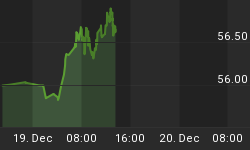Dear Speculators,
This past week the Dynamic Trading System did not close any positions, so there are no new results to report. The System has netted over 450% in position gains in the E-Mini Index Futures markets since the System's portfolio was launched in July '05, with our model portfolio up 147% in that time frame.
If you would like to read more about The Agile Trader Index Futures Service, click HERE.
Or if you would like a free 30-day trial to The Agile Trader, click here.
Last week in this space we discussed the SPX's defying the gravitational field exerted by the 4-Yr Cycle. According to that cycle the index is likely to put in an important low between now and October 2006.

But as you can see the SPX (represented in the current cycle by the thick red line) has broken to yet a new cycle high, unprecedented at this point in the cycle except for during the bubbles of the 1998 and 1986.
With this new and fairly convincing breakout of the SPX (now 1326), which leaves the key 1295-1300 congestion level behind, we are forced to abandon our mid-term downside projections until market conditions dictate otherwise. As long as the SPX maintains some "loft" above 1300, we would now be looking for the index to move higher until about trading-day # 950, which will arrive in mid July. The precedents of 1998 and 1986 are now in play.
Note: A quick drop below 1300 would zip us back into our bear suit, and put the 1966 analogue back in play (navy blue arrow on the chart above).
But let's look at the memorable corrections that followed the rallies into August 1986 and July of 1998, the summers of the 4th year of each cycle.
On the chart above you can see that the correction into October 1986 (brown line, moving toward trading-day 1008) was quite mild. And on the chart below you can see that the market continued to rally deep into year one of the subsequent cycle in 1987. But a year later came the crash of '87, a 33% drubbing the likes of which had not been seen in 50 years.
The 1998 correction was neither as "delayed" nor as sharp, starting late, in July '98 but climaxing on schedule in October '98 with about a 20% thrashing.

So, assuming that the stock market has decided to delay its normal 4-year cycle correction, the extent to which that cycle is delayed is probably also the extent to which a more memorably scary market decline (sometime over the next 18 months) increases.
EARNINGS
This past week Standard & Poors finally published the bottom-up consensus EPS estimates for 2007 on the SPX.

As you can see, the bottom-up consensus for CY07 has popped up to $95.23, which smoothes out the projected growth path and (for the moment) maintains expected growth at greater-than +10%.
Forward 52-Week EPS projections continue to move in a bullish trend, in line with the SPX's positive trend...

...which maintains the SPX PE on F52W EPS below its 46-year median of 15.8 and well below its 10-yr median of 18.2.

The most interesting aspect of this chart is the low volatility of our SPX PE measures relative to the high volatility of the Price/Dividend Ratio of the 10-Yr Treasury. It's actually pretty shocking to see that the stock market is having virtually NO PE reaction in response to the volatility of bond valuations.
Is the stock market's sanguinity in the face of the bond market's relative hysteria meaningful? I would think that it would have to be. However, just WHAT it means, will have to be a subject for further study in the weeks ahead, as the markets drop "crumbs" (like Hansel and Gretel) that we can pick up as we try to follow their path through the woods.
1966
We have, in the past, examined how similar the story has been on stock and bond yields lately to that of the mid '60s.

The 10-yr Treasury Yield had been stuck in the 4% area with the SPX Forward 52-Week Earnings yield near 6% and BAA Corporate yields BELOW that of the SPX yield (red line below the blue one).
But we are seeing changes in these relationships that are surprisingly reminiscent of the changes that began to take place about 1966. (Ring a bell? Rising inflation? The US caught in an increasingly unpopular war/quagmire in a distant land?) Does this mean that we're doomed to see the 10-Yr yielding 15%. Not by any stretch. But it does suggest that with yields rising, expectations for a weaker dollar and higher inflation are being priced into a variety of markets.
Note, also, how the action in these yields is reminiscent of what was happening in 1994, in the aftermath of Operation Desert Storm.

...which is why my eye keeps going back to the 1966 analogue (navy blue above), as well as to 1994 (royal blue).
As stated above, as long as the SPX holds above 1300, we can't get too bearish, but neither can we ignore what history has to say about similar situations.
The saving grace for the stock market right now is that projections for earnings growth remain robust.

Growth in earnings projections is currently sustaining at greater than 10%. As long as those projections hold up the market may escape a correction of significant magnitude. But if rising energy prices along with a broad array of commodity prices should begin to impinge on profit margins (and remember, with Nominal GDP growth expected to be no more than about 7% and EPS projections at greater than 11%, analysts are actually expecting WIDENING profit margins), then these optimistic projections could very well be ratcheted down. And if that happens, then we would again be alert to the possibility of bearish market action into the fall of this year.
Best regards and good trading!















